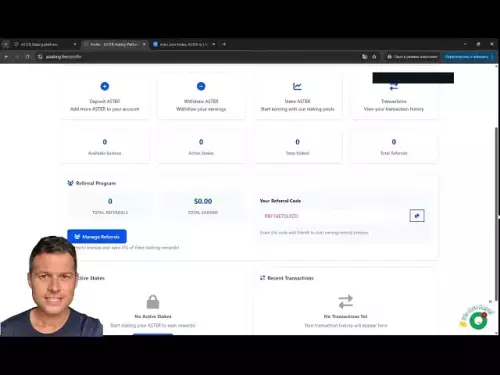-
 bitcoin
bitcoin $111375.742210 USD
-8.60% -
 ethereum
ethereum $3780.311592 USD
-13.98% -
 tether
tether $1.001299 USD
0.07% -
 bnb
bnb $1093.375857 USD
-13.01% -
 xrp
xrp $2.339375 USD
-16.91% -
 solana
solana $185.029017 USD
-16.69% -
 usd-coin
usd-coin $1.000230 USD
0.04% -
 tron
tron $0.319531 USD
-5.16% -
 dogecoin
dogecoin $0.190791 USD
-23.59% -
 cardano
cardano $0.638663 USD
-21.82% -
 ethena-usde
ethena-usde $0.998483 USD
-0.20% -
 hyperliquid
hyperliquid $37.741486 USD
-14.68% -
 chainlink
chainlink $17.229851 USD
-22.17% -
 stellar
stellar $0.316546 USD
-16.74% -
 bitcoin-cash
bitcoin-cash $507.861193 USD
-13.18%
Detailed Explanation of Technical Analysis of Cryptocurrency K-line Charts: Master These Tools to Improve Trading Efficiency
K-line charts help crypto traders analyze price patterns and market sentiment through candlestick shapes, colors, and technical indicators like RSI and MACD.
Jun 12, 2025 at 02:43 am

Understanding Cryptocurrency K-line Charts
Cryptocurrency K-line charts, also known as candlestick charts, are essential tools for traders aiming to interpret market behavior and make informed decisions. Each K-line represents a specific time period—such as 1 minute, 5 minutes, or 1 day—and displays the open, high, low, and close prices during that interval. The body of the candle shows the range between the opening and closing prices, while the wicks (or shadows) indicate the highest and lowest points reached. Recognizing patterns in these candles can provide insight into potential price movements.
Green candles signify bullish movement where the closing price is higher than the opening price, whereas red candles represent bearish trends with a lower closing price. Understanding how to read these signals helps traders anticipate market sentiment and identify possible reversals or continuations.
Key Technical Indicators Used in K-line Analysis
To enhance the accuracy of predictions derived from K-line charts, traders often incorporate technical indicators. Among the most commonly used are:
- Moving Averages (MA): These smooth out price data over a specified time frame, helping to identify trends by filtering out short-term volatility.
- Relative Strength Index (RSI): This momentum oscillator measures the speed and change of price movements, typically on a scale of 0 to 100, indicating whether an asset is overbought (>70) or oversold (
- Bollinger Bands: Comprising a moving average and two standard deviation lines, they help assess volatility and potential breakout points.
- MACD (Moving Average Convergence Divergence): This trend-following momentum indicator shows the relationship between two moving averages of a cryptocurrency’s price.
Each indicator offers unique insights, and combining them can increase the reliability of trading signals. For instance, using RSI alongside Bollinger Bands may reveal strong reversal opportunities when prices touch the upper or lower bands while RSI suggests extreme conditions.
Common Candlestick Patterns and Their Interpretation
Recognizing candlestick patterns is crucial for effective K-line chart analysis. Some of the most widely recognized patterns include:
- Hammer and Inverted Hammer: These indicate potential bullish reversals after a downtrend. The hammer has a long lower shadow and small real body at the top, suggesting buying pressure.
- Shooting Star and Hanging Man: The shooting star appears at the top of an uptrend and suggests a bearish reversal, while the hanging man occurs at the bottom of a downtrend and hints at a potential bullish reversal.
- Doji: This pattern forms when the opening and closing prices are almost equal, signaling indecision in the market.
- Engulfing Patterns: A bullish engulfing pattern follows a downtrend and consists of a large green candle completely engulfing the previous red candle, implying a shift in momentum.
Understanding these formations allows traders to better predict short-term price movements and adjust their strategies accordingly.
Setting Up Your Chart for Effective K-line Analysis
Before diving into K-line interpretation, it's vital to configure your chart properly. Most cryptocurrency trading platforms allow customization of time frames, indicators, and overlays. Here’s how to set up a functional chart:
- Select the preferred time frame based on your trading strategy. Day traders might opt for 1-minute or 5-minute intervals, while swing traders may use 4-hour or daily charts.
- Overlay key technical indicators such as MA, RSI, and Bollinger Bands to complement candlestick patterns.
- Adjust color schemes for clarity—green for bullish and red for bearish candles.
- Add horizontal support and resistance lines manually or via automated tools to identify critical price zones.
A well-configured chart enhances readability and reduces cognitive load, enabling faster decision-making during volatile market conditions.
Practical Tips for Applying K-line Analysis in Trading
Successfully applying K-line analysis requires more than just recognizing patterns—it involves disciplined execution and risk management. Consider the following practices:
- Combine candlestick signals with volume analysis to confirm strength behind price moves. A bullish pattern supported by high volume is more reliable than one with low participation.
- Set stop-loss orders below recent swing lows or above highs depending on trade direction to limit potential losses.
- Avoid overtrading by waiting for high-probability setups rather than acting on every minor signal.
- Backtest strategies using historical data before deploying real capital to validate effectiveness.
Consistency in applying these principles will improve overall trading performance and reduce emotional interference in decision-making.
Frequently Asked Questions
What is the best time frame for reading K-line charts in cryptocurrency trading?The optimal time frame depends on your trading style. Scalpers usually prefer 1-minute to 15-minute charts, day traders often use 15-minute to 1-hour intervals, and swing traders analyze 4-hour or daily charts for broader trends.
Can K-line analysis be applied to all cryptocurrencies?Yes, K-line analysis is universally applicable across all tradable assets, including Bitcoin, Ethereum, altcoins, and stablecoins. However, liquidity and market depth may affect the reliability of signals on lesser-known tokens.
How do I differentiate between a genuine candlestick reversal and a false signal?False signals can be filtered by confirming with additional technical indicators like RSI divergence or volume spikes. Also, analyzing multiple time frames helps ensure alignment between short-term and long-term trends.
Is K-line chart reading sufficient for profitable trading?While K-line charts offer valuable insights, relying solely on them increases the risk of misinterpretation. Combining candlestick analysis with fundamental assessments and macroeconomic factors leads to more robust trading strategies.
Disclaimer:info@kdj.com
The information provided is not trading advice. kdj.com does not assume any responsibility for any investments made based on the information provided in this article. Cryptocurrencies are highly volatile and it is highly recommended that you invest with caution after thorough research!
If you believe that the content used on this website infringes your copyright, please contact us immediately (info@kdj.com) and we will delete it promptly.
- Bittensor (TAO): Super Bullish Signals Point to Potential 2x Rally
- 2025-10-11 10:25:12
- Silver Price Correction: Navigating the Dip & Identifying Key SEO Keywords
- 2025-10-11 10:25:12
- MoonBull: The Crypto Meme Coin Promising 1000x Gains?
- 2025-10-11 10:30:01
- Crypto Payroll Revolution: Stablecoins, Altcoins, and the Future of Salary Payments
- 2025-10-11 10:30:01
- Decoding Crypto Trends: XRP's Bitcoin Dream, BlockDAG's Rise, and the PayFi Revolution
- 2025-10-11 10:30:01
- Amina Bank & Polygon: Institutional Staking with a Sweet 15% Yield
- 2025-10-11 10:30:15
Related knowledge

Practical parameter settings for a Bitcoin multi-timeframe moving average system
Sep 18,2025 at 10:54pm
Optimizing Timeframe Combinations for Bitcoin Trading1. Selecting appropriate timeframes is crucial when building a multi-timeframe moving average sys...

How can I filter out false breakouts in Dogecoin high-frequency trading?
Sep 22,2025 at 01:00am
Understanding False Breakouts in Dogecoin Trading1. A false breakout occurs when Dogecoin's price appears to move beyond a defined support or resistan...

Techniques for identifying tops and bottoms in the Bitcoin on-chain NVT model
Sep 20,2025 at 07:54pm
Understanding the NVT Model in Bitcoin Analysis1. The Network Value to Transactions (NVT) ratio is often described as the 'P/E ratio' of the cryptocur...

What does the surge in open interest in Bitcoincoin futures mean?
Sep 20,2025 at 11:18pm
Understanding the Surge in Dogecoin Futures Open Interest1. A surge in open interest within Dogecoin futures indicates a growing number of active cont...

How can I use the Ethereum USDT premium to gauge market sentiment?
Sep 18,2025 at 11:55pm
Understanding the Ethereum USDT Premium1. The Ethereum USDT premium refers to the price difference between USDT (Tether) traded on Ethereum-based plat...

What should I do if Ethereum staking yields decline?
Sep 20,2025 at 06:18am
Understanding the Causes Behind Declining Ethereum Staking Yields1. The Ethereum network transitioned to a proof-of-stake consensus mechanism with the...

Practical parameter settings for a Bitcoin multi-timeframe moving average system
Sep 18,2025 at 10:54pm
Optimizing Timeframe Combinations for Bitcoin Trading1. Selecting appropriate timeframes is crucial when building a multi-timeframe moving average sys...

How can I filter out false breakouts in Dogecoin high-frequency trading?
Sep 22,2025 at 01:00am
Understanding False Breakouts in Dogecoin Trading1. A false breakout occurs when Dogecoin's price appears to move beyond a defined support or resistan...

Techniques for identifying tops and bottoms in the Bitcoin on-chain NVT model
Sep 20,2025 at 07:54pm
Understanding the NVT Model in Bitcoin Analysis1. The Network Value to Transactions (NVT) ratio is often described as the 'P/E ratio' of the cryptocur...

What does the surge in open interest in Bitcoincoin futures mean?
Sep 20,2025 at 11:18pm
Understanding the Surge in Dogecoin Futures Open Interest1. A surge in open interest within Dogecoin futures indicates a growing number of active cont...

How can I use the Ethereum USDT premium to gauge market sentiment?
Sep 18,2025 at 11:55pm
Understanding the Ethereum USDT Premium1. The Ethereum USDT premium refers to the price difference between USDT (Tether) traded on Ethereum-based plat...

What should I do if Ethereum staking yields decline?
Sep 20,2025 at 06:18am
Understanding the Causes Behind Declining Ethereum Staking Yields1. The Ethereum network transitioned to a proof-of-stake consensus mechanism with the...
See all articles










































































